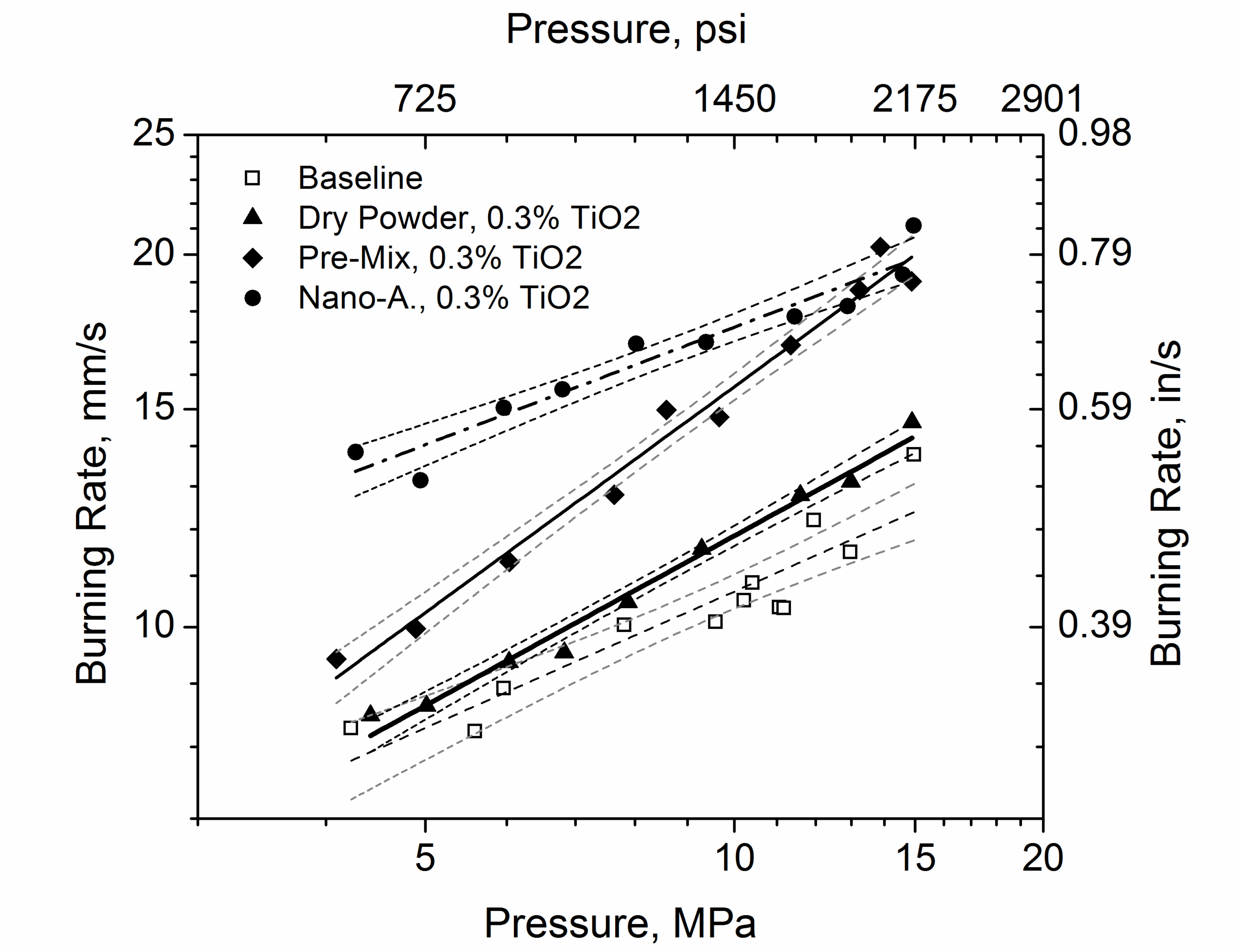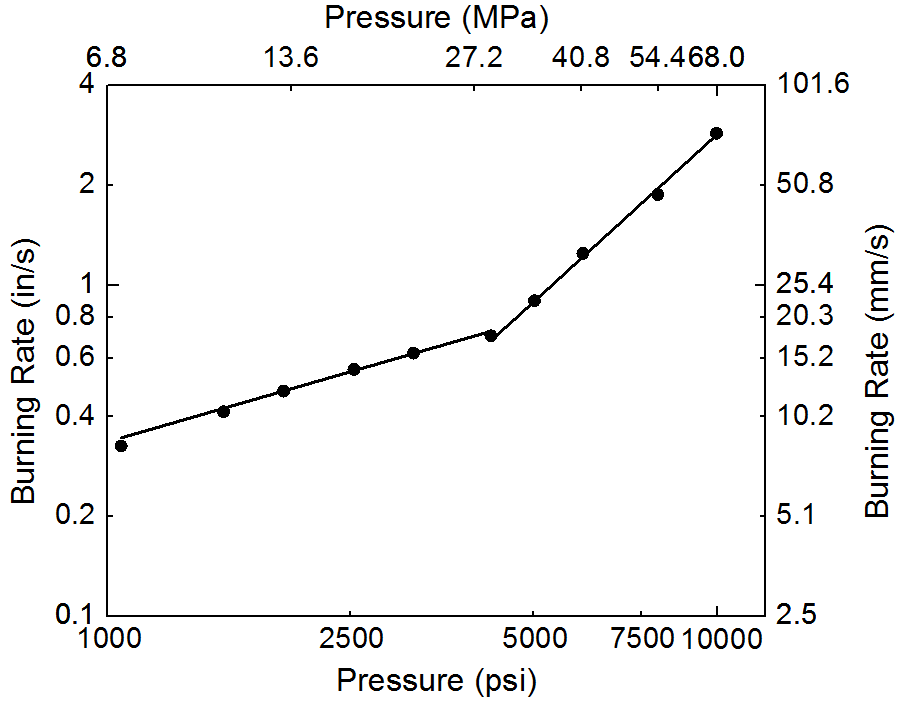Over the past 15 years, much of our propellant-related efforts have centered on the development and understanding of advanced additives to tailor the burning rate and performance of rocket propellants, with an emphasis on AP/HTPB formulations. Many of the studies involving AP/HTPB-based composite propellants include work with nano-scale additives, particularly those produced using the nano-assembly or in-situ method where the nanoparticles are synthesized directly in the propellant binder material. Much of this work and additional studies using other burning rate additives has been in collaboration with the Seal Research Group at the University of Central Florida (UCF). These concepts have been applied to insensitive munitions and other propulsion applications by Reid and coworkers at Helicon Chemical Company. Related studies have explored in more detail the relationship between nanoparticle additives and propellant ageing, mechanical properties, and homogeneity. Recent work by our group has also included the development of a detailed database of burning rates over a range of AP size and concentration as well as extreme pressures.

Burning rates of solid composite propellants containing various forms of nano-TiO2 [1].

Typical burning rates of 83% solids loading, 8% 24-mm-Al, 200-mm AP up to 10,000 psia.
References:
[1] Allen, T. W., Demko, A. R., Johnson, M., Sammet, T., Petersen, E. L., Reid, D. L., Draper, R., and Seal, S., “Laboratory-Scale Burning of Composite Solid Propellant for Studying Novel Nanoparticle Synthesis Methods,” AIAA Paper 2013-0821, 51st AIAA Aerospace Sciences Meeting, Jan. 7 – 10, 2013, Grapevine, TX.
